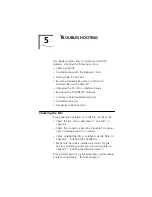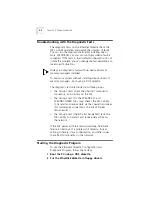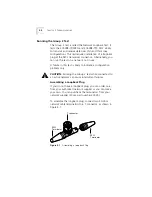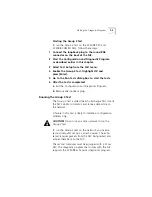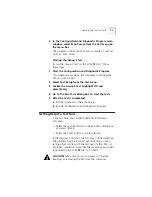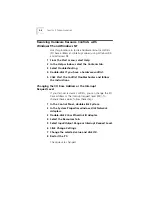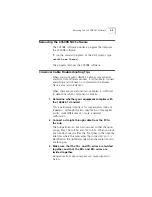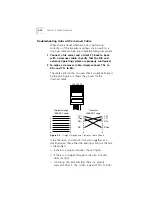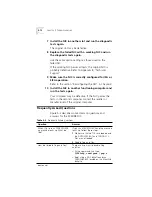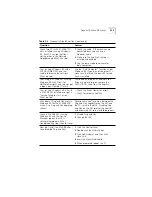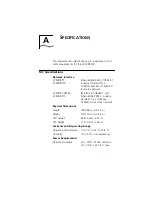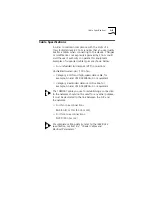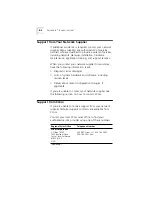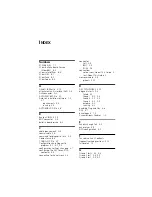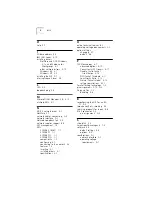
Troubleshooting Tips
5-11
Troubleshooting Tips
Review these tips to check the 3C509B NIC further.
1 Make sure the NIC is seated correctly in the slot.
Check the installation by reviewing the installation
instructions in Chapter 2.
2 Inspect all cables and connections.
If you are using thin Ethernet cable, make sure that you
have a T connector attached to the NIC and all other NICs
on the network. Make sure that the thin Ethernet segment
is terminated at both ends with a 50-ohm terminator.
3 Make sure that you booted your computer under
DOS version 3.1 or later, and that no device drivers
or memory managers are loaded.
4 If you are running the Group 2 test (only on the
3C509B-TPC or the 3C509B-COMBO NIC), make sure
that the loopback plug is securely attached to the
NIC’s BNC connector and that the NIC is attached to
a properly cabled network.
If this test fails, try another loopback plug.
5 If you are running the Group 3 test, make sure
that the NIC is connected to a properly cabled and
inactive network and that an echo server is set up
on the network.
To further isolate the problem, use a crossover cable
to connect a known good PC to the PC you are testing.
The PCs should be connected back to back with no
other network devices between the PCs. For more
information about the crossover cable, see “Crossover
Cable Troubleshooting Tips.”
6 Make sure that the settings for the NIC’s options are
not the same settings used in the system or on any
other NIC installed in the computer.
If you need help, select
Configuration and Diagnostic
Program
from the
EtherDisk
diskette main menu. Then
select
Commonly Used Interrupts or I/O Base Addresses
from the NIC Configuration screen.





